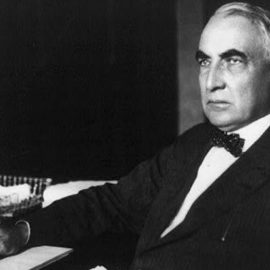

This article is an excerpt from the Shortform book guide to "The Messy Middle" by Scott Belsky. Shortform has the world's best summaries and analyses of books you should be reading.
Like this article? Sign up for a free trial here.
What does it really take to build a successful business from the ground up? Why do so many entrepreneurs gloss over the challenging middle years between startup and success?
Being an entrepreneur is hard, and the journey from concept to success involves far more than just the exciting moments of launching and achieving your goals. The path includes uncertainty, setbacks, and countless challenges that many business leaders prefer not to discuss.
Keep reading to explore the real struggles of entrepreneurship and discover how successful leaders navigate the tough times that shape their ultimate success.
Entrepreneurship Is Hard
Most business leaders like to brag about how their companies started and how much success they found in the end, but Belsky points out that recounting these dramatic moments reveals little about their actual journeys. The time between launching an idea and seeing it realized isn’t glamorous, and many successful entrepreneurs never talk about it because doing so requires a level of vulnerability. However, skipping over the important “middle years” leaves aspiring entrepreneurs with an incomplete and unrealistic picture of what to expect. Belsky explains that being an entrepreneur is hard, detailing two challenges during these middle years.
(Shortform note: Though Belsky discusses the twists and turns you’ll face on the way to becoming a successful entrepreneur, he doesn’t directly acknowledge the high rate at which most entrepreneurial startups fail. In The E-Myth Revisited, Michael E. Gerber points out that 40% of new businesses fail within the first year and 80% fail within five years. Like Belsky, Gerber disparages romantic notions about how businesses are born and what it takes to succeed, but he places the blame for most failures on business owners who focus on technical expertise and product development rather than improving their business skills. According to Gerber, an entrepreneur must play the roles of technician, visionary, and pragmatist all at once.)
Uncertainty
The first challenge an entrepreneur faces is dealing with uncertainty. When you start a new project or venture, you have no way of knowing whether it will succeed. Belsky argues that leaders must function without certainty and let the growth process play out. Part of this means resisting the urge to seek easy or simplistic solutions to business problems. This is an issue Belsky struggled with himself—when growing his business felt like a neverending uphill battle without a clear path forward, he had to fight the urge to sweep problems under the rug or settle for easy workaround solutions. He argues that patching over problems with easy fixes will often lead you to overlook truly original ideas that might make your business stand out.
(Shortform note: One danger of uncertainty that Belsky doesn’t touch on is that you might find it hard to make decisions at all. However, indecision isn’t a luxury business leaders can afford. In Extreme Ownership, former US Navy SEALs Jocko Willink and Leif Babin argue that part of a leader’s responsibility is to lead their team decisively, and in uncertain circumstances, imperfect decisions are better than none at all. There will be many times when you’ll have to make choices with limited information, and all you can do is make an educated guess based on your knowledge and experience. While all your decisions may not be perfect, being decisive will at least reinforce your team’s confidence in your ability to lead them.)
Belsky argues that, as an entrepreneur, if you can accept uncertainty as a fact of life, part of your mind will always be working on creative solutions to your business problems. Belsky attests to this from personal experience—during his time as an entrepreneur, part of his mind remained focused on work no matter what else was going on in his life. Though intrusive at times, this ongoing mental work was a vital part of making good decisions. To manage this constant background noise, he recommends focusing on the individual problems before you, such as fixing a design flaw in your product, while keeping an eye on your broader concerns, such as the ultimate goal and financial health of your business.
(Shortform note: Experts are divided on whether the mental “parallel processing” Belsky describes is even neurologically possible. In Brain Rules, biologist John Medina says it isn’t—that diverting your attention and then refocusing takes an enormous amount of brain power and lessens your ability to complete anything. In other words, multitasking doesn’t work. However, in Hyperfocus, productivity expert Chris Bailey disagrees to some extent. He writes that your brain can focus on multiple simple tasks at a time, or even one simple and one complex task. However, doing so runs the risk of attention overload—if you try to focus on too many things, they start to crowd each other out of your brain’s working memory.)
Setbacks & Valleys
The second challenge is dealing with setbacks and extended periods of hardship. Again, entrepreneurship is hard. Belsky emphasizes that you and your team must accept discomfort as a necessary part of pursuing your goals. After all, many successful companies emerged from failed initial concepts, and your ability to pivot and start over, despite the psychological toll it takes, is crucial to success. To achieve this resilience, you need a deep commitment to your overall mission without becoming attached to one specific approach. Since this kind of resilience is so important, Belsky suggests that, when hiring your team, you should evaluate your candidates’ ability to deal with uncertainty, challenges, and self-doubt.
(Shortform note: The discomfort of dealing with setbacks and pivots may not be as bad as Belsky suggests if you make it a point to regularly confront it. In The Lean Startup, Eric Ries argues that because startups have limited resources, it’s best to find pivot points quickly if your current direction isn’t working. Therefore, Ries says you should have regular “pivot or persevere” meetings—from once every few weeks to once every few months, depending on your startup’s volatility. At these meetings, you should have a firm definition of what failure looks like in the context of your business’s overall mission so you’ll know when the time has come to change direction, taking some of the emotional strain out of the business equation.)

———End of Preview———
Like what you just read? Read the rest of the world's best book summary and analysis of Scott Belsky's "The Messy Middle" at Shortform.
Here's what you'll find in our full The Messy Middle summary:
- A gravely overlooked aspect of being an entrepreneur
- The skills you need to keep your startup business afloat
- Why the middle part of starting a business is the most important






